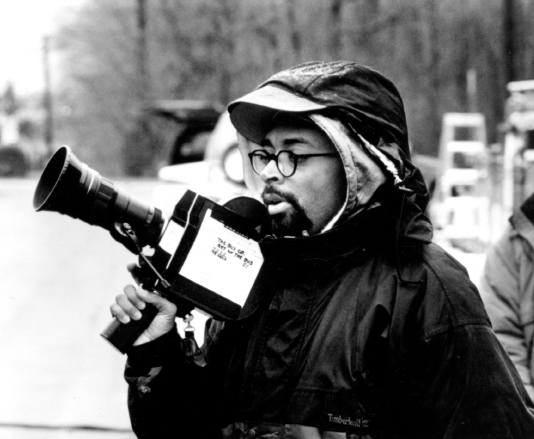Printed Page 208
MEDIA LITERACY
Case Study

Breaking through Hollywood’s Race Barrier
Despite inequities and discrimination, a thriving black cinema existed in New York’s Harlem district during the 1930s and 1940s. Usually bankrolled by white business executives who were capitalizing on the black-only theaters fostered by segregation, independent films featuring black casts were supported by African American moviegoers, even during the Depression. But it was a popular Hollywood film, Imitation of Life (1934), that emerged as the highest-grossing film in black theaters during the mid-1930s. The film told the story of friendship between a white woman and a black woman whose young daughter denied her heritage and passed for white, breaking her mother’s heart.
Despite African Americans’ long support of the film industry, their moviegoing experience has not been the same as that of whites. From the late 1800s until the passage of Civil Rights legislation in the mid-1960s, many theater owners discriminated against black patrons. In large cities, blacks often had to attend separate theaters where new movies might not appear until a year or two after white theaters had shown them. In smaller towns and in the South, blacks were often only allowed to patronize local theaters after midnight. In addition, some theater managers required black patrons to sit in less desirable areas of the theater.1
Changes took place during and after World War II, however. When the “white flight” from central cities began during the suburbanization of the 1950s, many downtown and neighborhood theaters began catering to black customers in order to keep from going out of business. By the late 1960s and early 1970s, these theaters had become major venues for popular commercial films such as Guess Who’s Coming to Dinner? (1967) and In the Heat of the Night (1967).
Based on the popularity of these films, black photographer-turned-filmmaker Gordon Parks, who directed The Learning Tree (1969), adapted from his own novel, went on to make commercial action/adventure films, including Shaft (1971), remade by John Singleton in 2000. Popular in urban theaters, especially among black teenagers, the movies produced by Parks and his son—Gordon Parks Jr. (Super Fly, 1972)—spawned a number of commercial imitators, labeled blaxploitation movies. These films were the subject of heated cultural debates in the 1970s; like some rap songs today, they were both praised for their realistic depictions of black urban life and criticized for glorifying violence. Nevertheless, these films reinvigorated urban movie attendance, reaching an audience that had not been well served by the film industry until the 1960s.
Although opportunities for black film directors expanded in the 1980s and 1990s, mainstream Hollywood is still a formidable place for outsiders to crack. Even acclaimed director Spike Lee has had difficulty in getting large budgets from the studios, even after several critical and commercial successes. For example, in making Get on the Bus (1996), Lee asked a number of wealthy black men to bankroll $2 million for the film, which depicted the October 1995 Million Man March on Washington, D.C., celebrating the kind of black self-reliance that Lee’s own moviemaking has long illustrated. And in 2004, director and playwright Tyler Perry split the $5.5 million budget with Lionsgate Films for Diary of a Mad Black Woman, which went on to gross more than $50 million. Its success allowed Perry to become an industry unto himself, writing, directing, and producing a series of successful films. These films consistently demonstrate the appeal of themes and narratives brought to the screen by black directors.
APPLYING THE CRITICAL PROCESS
DESCRIPTION Consider a list of the top twenty-five all-time highest-grossing movies in the United States, such as the one on the Internet Movie Database, http://us.imdb.com/boxoffice/alltimegross.
ANALYSIS Note patterns in the list. For example, of these twenty-five top-grossing films, pay attention to how many films are from African American directors, or have major roles with African American actors. Note what the most popular genres are.
INTERPRETATION What do the patterns mean? It’s clear, economically, why Hollywood likes to have successful blockbuster movie franchises. But what kinds of films and representations get left out of the mix?
EVALUATION It is likely that we will continue to see an increase in youth-oriented, animated/action movie franchises that are heavily merchandised and intended for wide international distribution. Indeed, Hollywood does not have a lot of motivation to put out other kinds of movies that don’t fit these categories. Is this a good thing?
ENGAGEMENT Watch a film by an African American director and consider what’s missing from most theater marquees. Visit aafca.com or browse imdb.com to find more films that feature African American directors and actors. See if Netflix, Hulu Plus, or your campus libraries carry any of these titles, and request them if they don’t. Spread the word on notable African American films by reviewing them online or in a college newspaper.